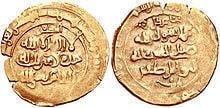Reign 1059–1099 House House of Sabuktegin Mother ? Died 1099 Great-grandparent Sabuktigin | Successor Mas'ud III Father Ma'sud I Parents Mas'ud I of Ghazni Grandparent Mahmud of Ghazni | |
 | ||
Similar Mas'ud I of Ghazni, Mahmud of Ghazni, Farrukh‑Zad of Ghazna, Mawdud of Ghazni | ||
Ibrahim of Ghazna (1033–1099), was sultan of the Ghaznavid empire from April 1059 until his death in 1099. Having been imprisoned at the fortress of Barghund, he was one of the Ghaznavid princes that escaped the usurper Toghrul's massacre in 1052. After his brother Farrukh-Zad took power, Ibrahim was sent to the fortress of Nay, the same fortress where the poet Masud Sa'd Salman would later be imprisoned for ten years.
Contents
Following Farrukh's death, Ibrahim was recognized as the last surviving male Ghaznavid. A military escort was sent to fetch him from Nay and he entered Ghazna on 6 April 1059. Ibrahim's reign was considered a golden age for the Ghaznavid empire, due to the treaties and cultural exchanges with the Great Seljuq empire.
Life
Ibrahim was born during his father's campaign into Gurgan and Tabaristan(c. 1033). He was reportedly had 40 sons and 36 daughters. One of these daughters married the g-g-grandfather of the historian Juzjani.
Ibrahim's son, Mas'ud, married Gawhar Khatun, daughter of Seljuq sultan Malik Shah, as a condition of peace between the Great Seljuq empire and the Ghaznavid empire.
Every year Ibrahim would copy the Quran by hand and send it to the caliph in Mecca.
Empire
Ibrahim rebuilt towns and settlements and instituted a vigorous policy for the restoration of social peace and economic prosperity in the Ghaznavid empire, which had been initiated by his brother Farrukh-Zad. During an unknown date, Ibrahim also arrested his vizier Abu Sahl Khujandi for unknown reasons. In 1060, at the request of the nobles of Ghur, Ibrahim invaded the region and deposed its ruler Abbas ibn Shith. He then had the latter's son Muhammad ibn Abbas placed on the Ghurid throne.
Ibrahim sent his son, Mahmud, with an army of ghazis consisting of 40,000 cavalry to raid Doab, between 1063 and 1070. Following Mahmud's successful campaigns into India, Ibrahim initially appointed him governor of India. However, for reasons unknown, Mahmud fell out of favor, was imprisoned in the fortress of Nay and his brother, Mas'ud, took his place as governor of India.
After 14 years of peace with the Great Seljuq empire, Ibrahim, in January 1073, sent an army into Sakalkand. His army met with initial success capturing Seljuq sultan Malik Shah's uncle, Uthman b. Chaghri beg, who was sent to Ghazna. However, an army led by the Seljuq Amir Gumushtegin Bilge bey and Anushtegin Gharchai, drove out the Ghaznavid army that had devastated Sakalkand. In 1077/8, Ibrahim appointed Abd al-Hamid Shirazi as his vizier.
In 1079, Ibrahim led a campaign into India, besieging a fortress in Pakpattan 120 Parasang(480 miles) from Lahore, taking it on 13 August 1079.
Death
Ibrahim died on 25 August 1099 ending a reign of 41 years. His tomb lies in the northeastern part of medieval Ghazna near Shaikh Radi d-Din 'Ali Lala's tomb.
